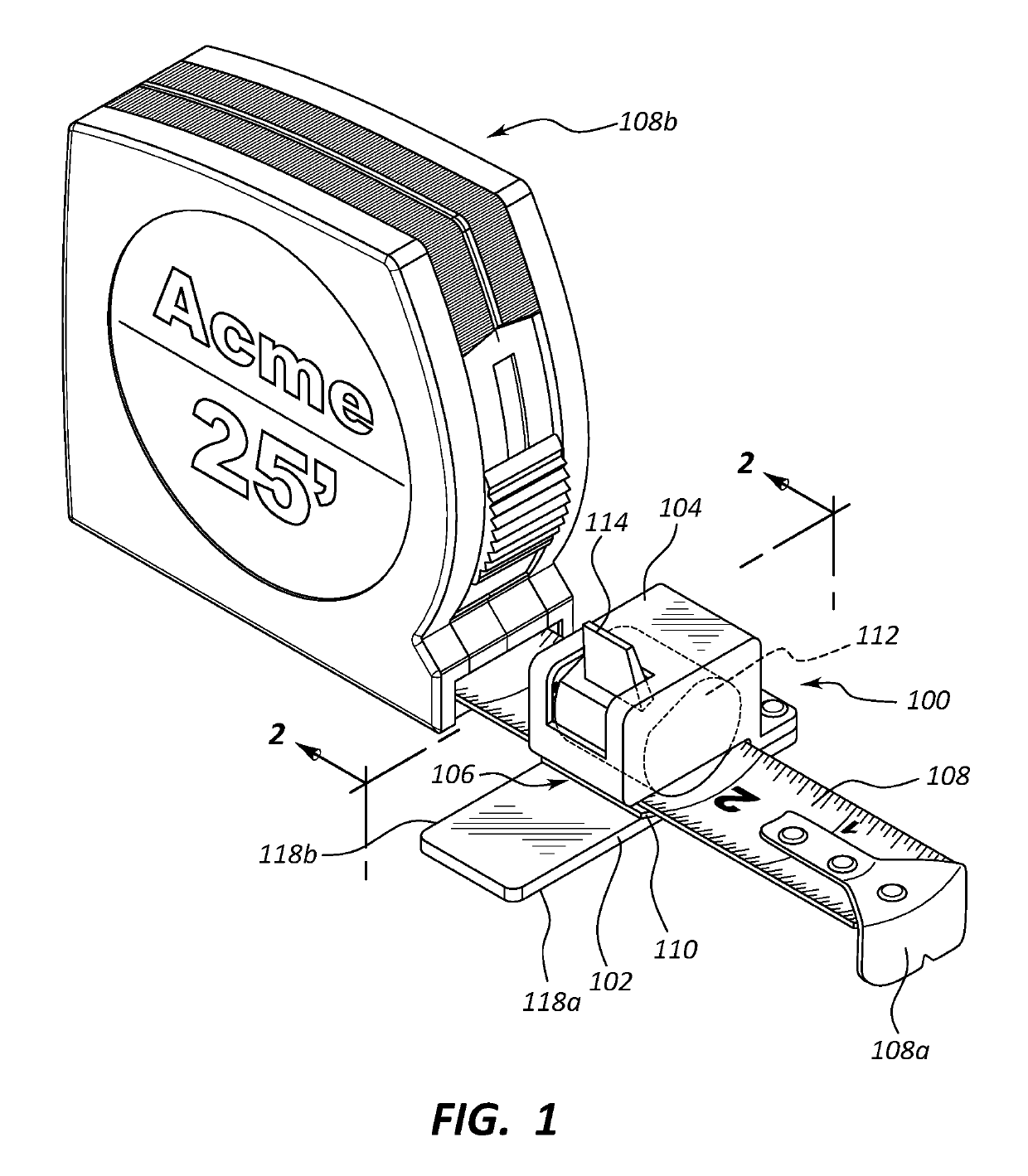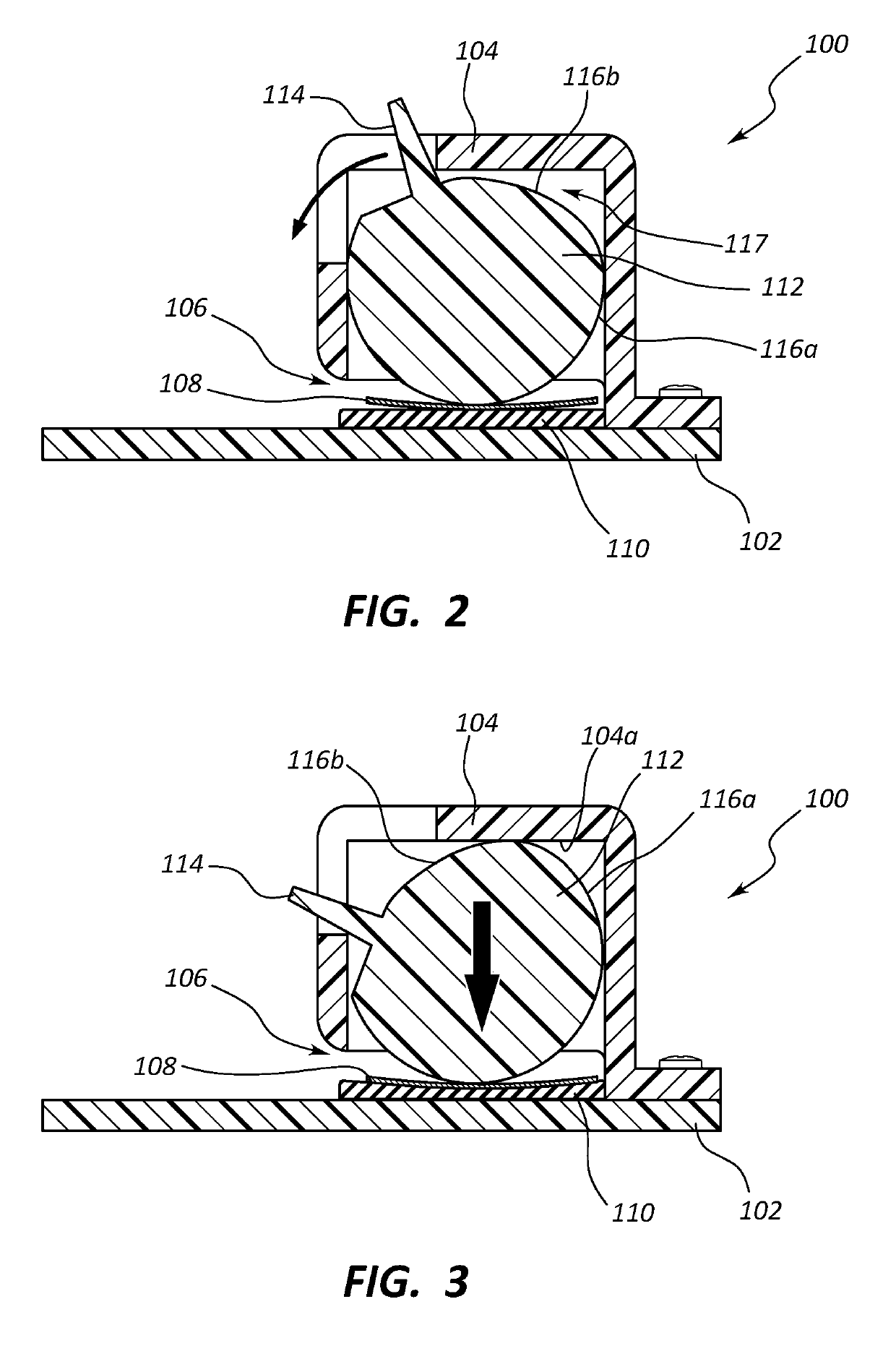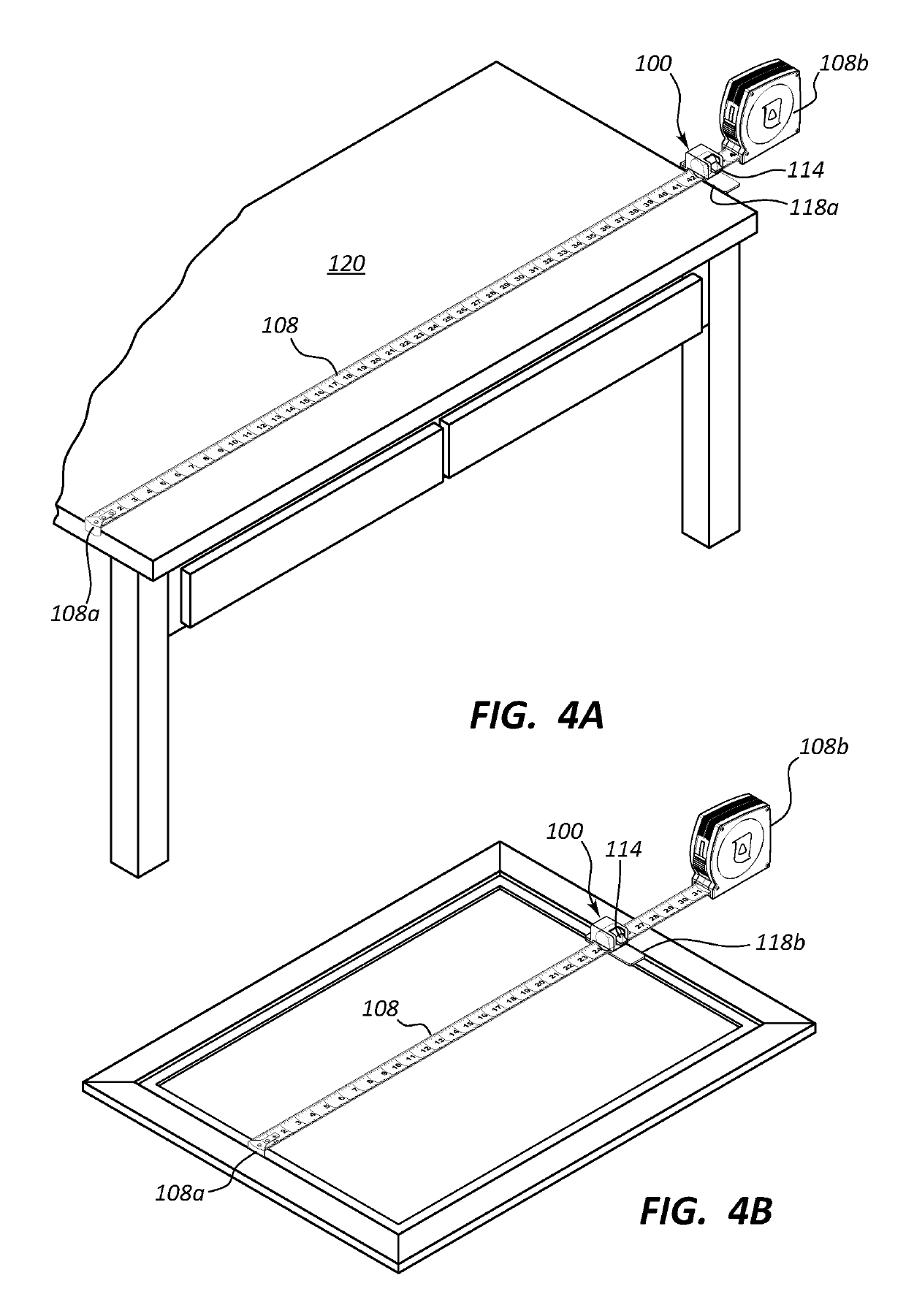Measurement devices and methods
a measurement device and tape technology, applied in the field of measurement devices, can solve the problems of difficult for a user to intentionally or inadvertently pull or push the tape, shorten or lengthen the locked distance associated with the particular locked position, and waste. the effect of frustration
- Summary
- Abstract
- Description
- Claims
- Application Information
AI Technical Summary
Benefits of technology
Problems solved by technology
Method used
Image
Examples
Embodiment Construction
[0038]I. Introduction
[0039]Embodiments of the disclosure relate to devices and methods that allow a user to take a measurement (e.g., using a tape), and then take that measurement to another location where a board or other material is to be cut, marked, compared, or the like with the measurement. According to one such embodiment, a device that is attachable to, or included with a tape measure may include a base member, a housing supported on the base member including a slot for slidably receiving a tape of the tape measure insertable through the slot of the housing, and an elastomeric gripping layer positioned in the housing, positioned to contact a face of the tape when the tape is locked in a given position during use. A movable pressure locking wedge may be positioned within the housing, which assists in locking the tape in the desired given position as the tape is pinched between the pressure locking wedge and another surface (e.g., the elastomeric gripping layer, or another sur...
PUM
 Login to View More
Login to View More Abstract
Description
Claims
Application Information
 Login to View More
Login to View More - R&D
- Intellectual Property
- Life Sciences
- Materials
- Tech Scout
- Unparalleled Data Quality
- Higher Quality Content
- 60% Fewer Hallucinations
Browse by: Latest US Patents, China's latest patents, Technical Efficacy Thesaurus, Application Domain, Technology Topic, Popular Technical Reports.
© 2025 PatSnap. All rights reserved.Legal|Privacy policy|Modern Slavery Act Transparency Statement|Sitemap|About US| Contact US: help@patsnap.com



